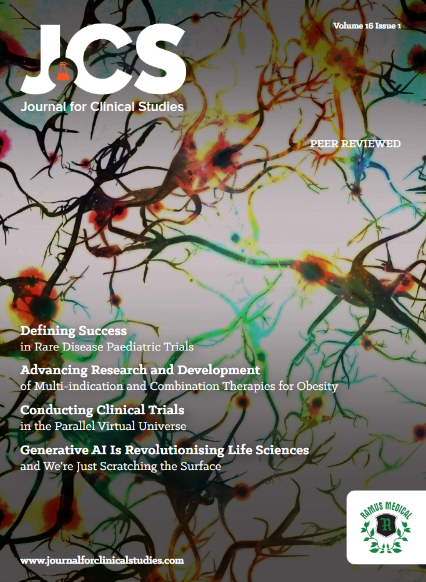- Drugmakers are taking longer to move a medicine from initial human testing to approval, with cumulative development times increasing from an average of about 10 years a decade ago to 12.5 years in 2018, according to a new report published this week by Iqvia.
- At the same time, the composite success rate calculated by Iqvia for all phases of clinical development fell to 11.4%, near the decade-low of 9.2% set in 2010.
- Against this backdrop of faltering R&D productivity, however, Iqvia predicts changes in clinical testing will help improve those figures over the next five years, highlighting in particular biomarker testing and greater availability of pools of pre-screened patients.
Pharma’s recent slump in R&D productivity — the rate of success in relation to the time and effort invested in drug development — has been observed by others, such as Deloitte.
But there are reasons for optimism. A new report from Iqvia says novel biomarkers and the ability to draw from pre-screened patient pools could provide a much-needed productivity boost to the industry.
Iqvia predicts biomarkers — indicators of a patient’s disease state — will have the greatest impact on clinical productivity over the next five years. Out of the 59 new drugs approved by the FDA last year, 12 were medicines were based on predictive biomarkers.
The availability of genetic testing has led to a greater understanding of the biomarkers linked to disease, and the use of these biomarkers to recruit certain types of participants and organize individuals into sub-populations is expected to increase.
Already in many oncology trials, investigative biomarkers are being used to match participants with experimental therapies that are likely to show the most benefit. In allergy trials, the use of better biomarkers is expected to lead to smaller and more intensive trials.
“Patients selected for predictive biomarkers in the enrollment process will help to enroll the right patient groups and reduce the likelihood that efficacy signals will be cloaked by less responsive or inappropriate patients,” the report says. This, according to the authors, will help prevent trial failures, especially in the areas of non-alcoholic steatohepatitis, allergy and cardiovascular disease.
Wearable activity monitors could also contribute to development of new “digital biomarkers” correlated to disease severity and outcomes. For instance, experts predict digital biomarkers like movement tracking, voice patterns and touch-screen use patterns may eventually be used in psychiatry, cardiology, rare disease and movement disorder trials. And in allergy trials, wearable devices can track sleep quality and will provide more accurate data than sleep questionnaires.
Machine-learning algorithms could also help identify the best patients for clinical trials.
Janet Woodcock, director of the Food and Drug Administration’s Center for Drug Evaluation and Research, recently described the clinical trial system as “broken.” Her answer? Greater use of novel trial designs like basket studies, which would be helped by improved biomarkers and better patient screening.
Drugmakers have for years used genetic testing and clinical biomarkers to identify patients most likely to benefit from their therapies. As more patient data — particularly genetic data— is gathered, such investments look set to continue.
GlaxoSmithKline, for instance, recently partnered with 23andMe, aiming to mine biomarkers from the DNA testing company’s database of more than five million users. GSK plans to use machine learning to identify genetic variants that could be possible drug targets.
Hal Barron, GSK’s chief scientific officer, said the agreement may eventually allow GSK to use the zip code data that 23andMe has gathered from customers to locate patients for clinical trials and determine where trial sites should be located.















